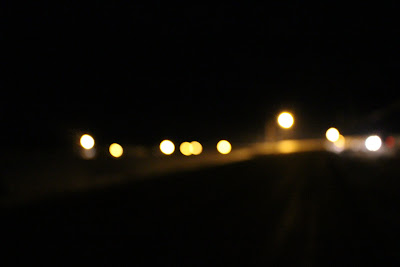when you cut the picture into 9 squares
b) What happens when you have a long shutter speed, and what types of pictures would you use a long shutter speed for? (2)
This is how long your camera’s shutter stays open for and it can be read on either the back of your screen or within the viewfinder.
c) What's another name for aperture, and what does an aperture control? (2)
This is also known as an F stop. It controls how much of your image is in focus or not (IE what is clearly and sharply seen and what is blurred out. It also controls how much light comes into the lens of your camera and hits the sensor (the equivalent of film.
d) What aperture setting would I need to take a portrait? (1)
e) What is depth of field? (1)
This is what is the range of distance within the subject that is acceptably and sharply in focus. It can be controlled using your F stops.
f) What does the term ISO refer to? (1)
ISO 100 = great for daylight use, no image grain.
ISO 400 = great for twilight use, a bit more grain.
ISO 1600 = much more suited towards low light or high action where you need to stop fast movement.
ISO 6400 = Even better suited to low light and fast action, but delivers grainy images.
g) What are the advantages of having your camera on Manual Mode? (1)
A shooting mode on your camera that enables you to control every aspect of shooting. You can manipulate the shutter speeds, ISO settings, aperture settings and loads more. On your camera this is the “M” mode.
h) Give me three terms that relate to exposure. (3)
lens, focus, flash
I) What is a lens and what are the three different types of lenses? (4)
Standard,Wide angle,
Ultra wide angle (fisheye)
j) What does it mean to focus your camera? (1)
This is what the camera is mainly trying to take a picture of. On a point and shoot, it is what appears in the green boxes on your camera’s LCD. For a DSLR, it is literally what can be clearly and sharply seen in the depth of field. The larger your F stop (f1.8) the less will be in focus.
k) What does "shooting speed mode" determine? (1)
This determines how many pictures (or exposures) your camera will take when the shutter is pressed down.
l) How is the "Raw" file different than the "JPEG" file? (1)
There are many different types of image files. The most common are JPEGs, which most cameras take and what you always see online. RAW is a much larger file that contains lots of information and allows for more flexible editing. Different camera companies make different RAW files. For example: Canon is CR2, Olympus ORF, Adobe is DNG.
/18






